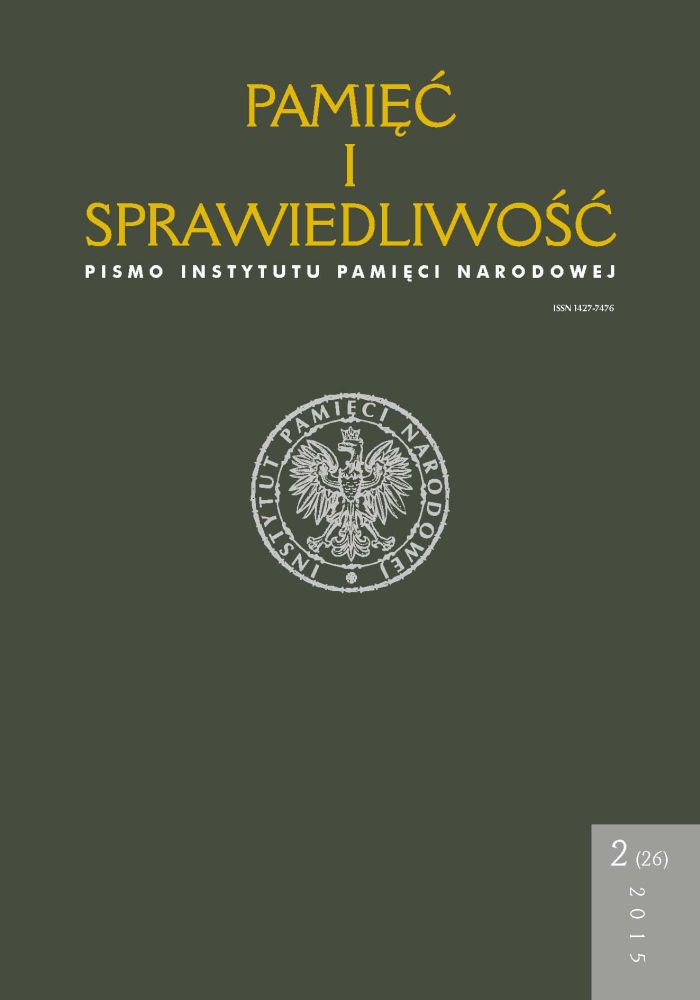Żeńskie oddziały sabotażowo-dywersyjne w strukturach armii podziemnej w latach 1940–1944 na podstawie relacji i wspomnień ich członkiń
Female Sabotage Troops in the Underground Army in 1940–1944, Based on the Relations and Memories of their Members
Author(s): Anna Marcinkiewicz-KaczmarczykSubject(s): History, Recent History (1900 till today), WW II and following years (1940 - 1949)
Published by: Instytut Pamięci Narodowej
Keywords: World War II; underground army; Women’ s Military Service; Home Army; Women Mining Patrols; Women’ s Department of Sabotage and Diversion – code-named ‘Discus’; Wanda Gertz, Zofia Franio
Summary/Abstract: The tradition of Polish women participating in pro-independence activities dates back to the nineteenth century. Since the beginning of the twentieth century, they had joined political parties and participated in the military preparations undertaken by these parties. In 1918 they even created the first female military formation – the Voluntary Legion of Women, which took part in the war on the border of the Second Republic. The next phase was their participation in the preparation of defence during the interwar period, followed by service in the Polish Victory Service/Union for Armed Struggle/Home Army (SZP-ZWZ-AK) in 1939–1945. A female unit, code-named ‘Cooperative’, was established in the structures of the SZP’s Department I (Organisational) Chief Command, and led by Col. Maria Wittek. The most important organisational development of the Women’ s Military Service took place in 1942. After renaming the Union for Armed Struggle (ZWZ) to the Home Army (AK), the Commander of Home Army issued order No. 59 on 25 February 1942, which formally established the WSK (Women’ s Military Service) and published detailed guidance on its operation. As an official task, it was foreseen that – in addition to sanitary service, communications, administrative, and economic and educational propaganda – women would also take part in acts of sabotage, intelligence and combat. For this reason women in the underground army were not only invited to join male sabotage subunits, but they also created their own ones. The latter teams included the Women Mining Patrol (KPM) and the Women’ s Department of Subversion and Sabotage, code-named ‘Discus’. The KPM was established in March 1940. Until 1942 they were part of the Union of Retaliation, and in November of that year they joined the Kedyw. The commander was Zofia Franio. ‘Discus’ was also established (in April 1942) within the structures of the Union of Retaliation, and then Kedyw, under the command of Lt. Wanda ‘Lena’ Gertz. Sabotage tasks by both troops began as early as 1942. The largest level of action by the KPM took place in 1942–1943, and ‘Discus’ in 1943–1944. In late 1943, members of both troops were withdrawn from diversionary actions and redirected toward preparations for the uprising, which included aiding in the production of incendiary bottles and gathering them in specially prepared quarters. At the outbreak of the uprising, the two female sabotage and diversion troops were reorganised. KPM ceased to operate within the structures of the Kedyw Warsaw District and was recreated into 16-member Female Branch of Sappers led by Dr. Franio, with the remaining mine layers sent to various male branches. The ‘Discus’ unit passed to the structures of Lt.-Col. Jan ‘Radosław’ Mazurkiewicz. It is difficult to precisely determine the number of women performing diversionarysabotage tasks, as many of them were not registered. During the occupation, ‘Discus’ consisted of approx. 100 members and KPM approx. 50. During the uprising, in total there were around 100 women performing these tasks, which accounted for only 1.4% of the women fighting in the Army at that time. Most members of the underground army acted as messengers or nurses, or performed other auxiliary tasks.
Journal: Pamięć i Sprawiedliwość.
- Issue Year: 26/2015
- Issue No: 2
- Page Range: 115-138
- Page Count: 24
- Language: Polish

